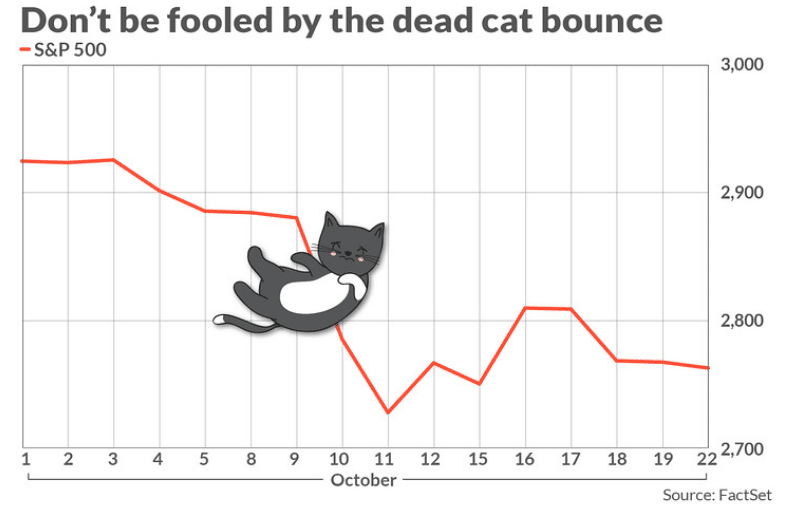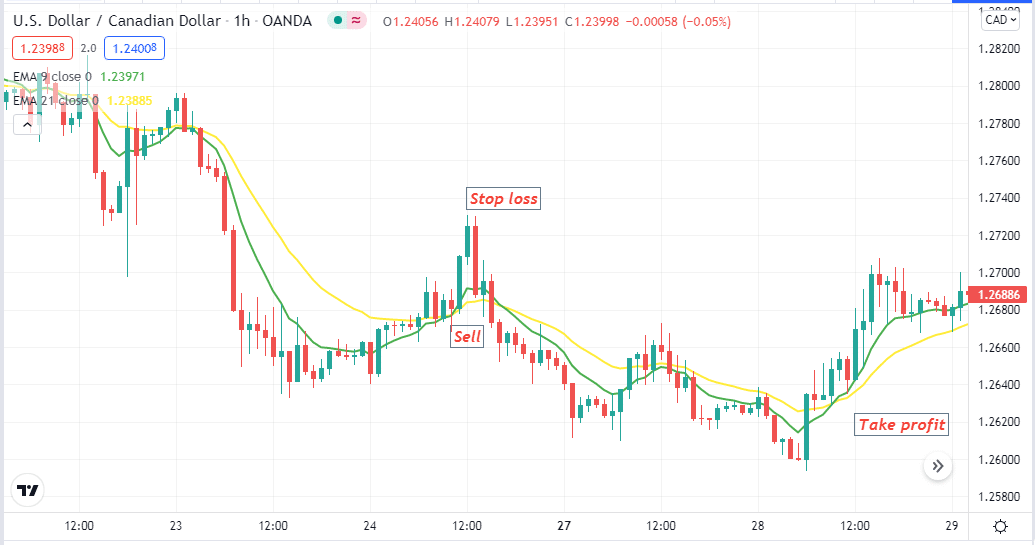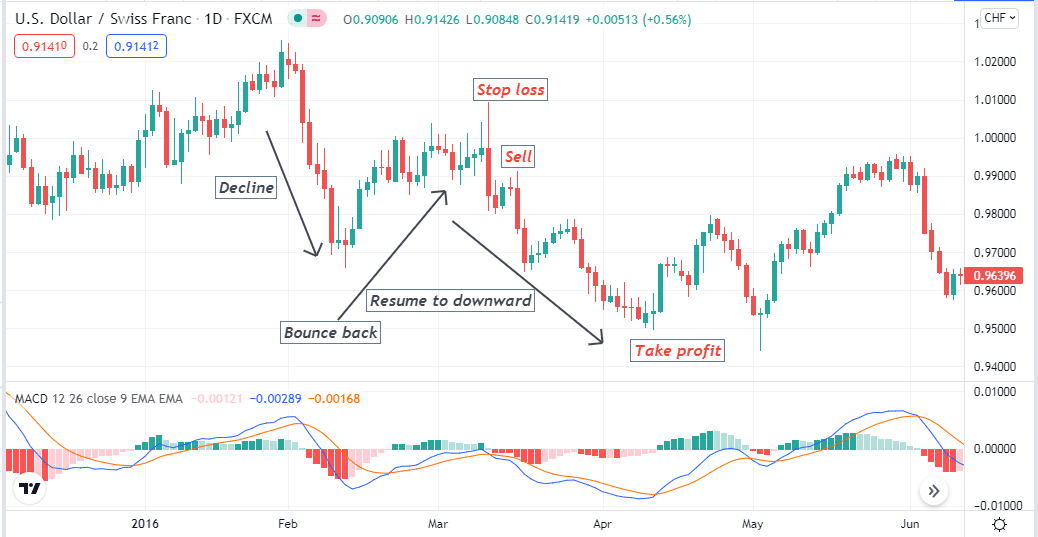Some common patterns are popular among traders worldwide due to functionality, effectiveness, etc. The basic concepts of trading assets are almost identical, as the price movement occurs according to participants’ actions. Traders with skills to identify those price formations like the “Dead cat bounce” and earn profits from a declining price.
However, trading in the financial market using any pattern involves having sufficient knowledge to identify the opportunities, risk management, time to avoid, etc. Let’s check this pattern, and list advantages, disadvantages, and trading strategies with chart attachments.
What is the “Dead cat bounce” pattern?
It is a downward price pattern that contains a spike. The idea is when you drop a cat from upside with a significant fast force, it will bounce. It usually has three parts as follows:
Sustainable decline
It is the first portion when the price declines from a high and makes a new lower low. After making the low price faces some support.
The bounce
When the price completes the first declining phase until it reaches the low, it bounces back to the upside and makes a high.
Resume to decline
Price resumes declining after the bounce or making a high. This part completes the pattern formation.

For example, suppose a stock price is $80, that starts to fall for a valid reason from that peak. It reaches $55, making a lower low on the chart. Then it bounces back to $70 and continues to decline, and the ending price is $40. Now the entire formation of decreasing from $80 to $40 will be the formation of the “Dead cat bounce” pattern.
How to trade with the “Dead cat bounce” pattern
You already know that this pattern occurs during a declining phase. So better opportunities to make money from selling the asset. When the bounce occurs, there is much possibility that the price will return to the support level from where the bounce takes place.
When you identify this pattern, you also can make a buy order from the support level. In that case, you won’t have any target profit target as there is no guarantee that the price will bounce toward any level. You can use support resistance levels or other technical tools to predict the high of the bounce or any other technical indicators to have trade suggestions.
This trading strategy is helpful for stock traders to minimize risk and increase profitability. You can use this technique to trade financial assets with sufficient volatility, such as commodities, currency pairs, cryptocurrencies, CFD assets, stocks, etc.
A short-term trading technique
This trading method applies to any major currency pair or trading assets that involve good volatility. We use a moving average crossover for confirmation to enter trades and close the position. This trading method applies to any time frames; we suggest using an hourly chart of the target asset.
Lower charts often have fake swing positions, so using an hourly chart lets you eliminate that fake swing high/lows and confusion of trading decisions. It is often complicated to sort out dead cat bounce patterns from regular declining patterns. Seeking bullish positions through a declining pattern will not be wise, and the risk ratio value is not attractive. Investors typically use this pattern to seek selling opportunities.

- We use EMA 9 (green line) and EMA 21 (yellow line) for making our entry position.
- The green EMA line crosses the yellow EMA on the upside when buying pressure increases. The exact opposite crossover between these EMA lines indicates selling pressure on the asset price.
- After the bounce, when the price starts to decline, seek potential sell opportunities. The green EMA crosses the yellow EMA line on the downside signals making it safe, and the price may continue to move down.
- Place sell order after the closing of the current red candle. Your stop loss should be above the recent bounce high, and the primary profit target should be near the first low of the pattern.
- Additionally, you can continue the sell order till the green EMA line stays below the yellow EMA. When the green EMA crosses the yellow EMA on the upside, close the sell order to signal potential buy force.
A long term trading strategy
We use the MACD indicator to determine potential trades’ entry/exit position in our long-term trading strategy. We seek long-term trading positions, so a daily chart is good enough to find trade setups using this method. Identify the initial downtrend of this pattern, then wait till the bounce and high position look at the MACD window:
- The dynamic blue line crosses the dynamic red line on the downside.
- Both dynamic lines are below the middle (0.0) line.
- Both lines are heading toward the downside.
- MACD red histogram bars take place below the middle (0.0) line.

These conditions above match your target asset chart to place a sell order with a stop loss above the current high. Close the sell position when:
- The dynamic blue line crosses the dynamic red line on the upside, and both lines head upside on the MACD window.
- MACD green histogram bars take place above the middle (0.0) line.
Pros and cons
| Pros | Cons |
| This pattern applies to many financial assets. | Sorting out this pattern is complicated. |
| Suggest trades with considerable profit. | Not always works. |
| Suggest setups at any time frame charts. | It involves confusion at lower time frame charts. |
Final thought
Finally, we try to enlighten every primary info about the dead cat bounce pattern in our article. We hope you find it educational and informative. We suggest mastering this pattern on demo trading, so you don’t need to lose capital during mastering this pattern and trading strategies.




